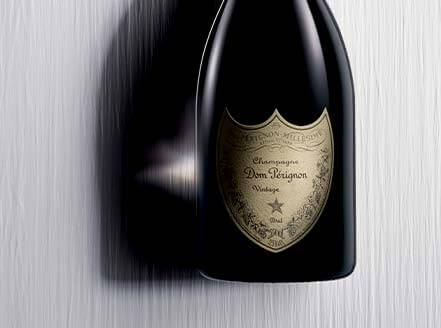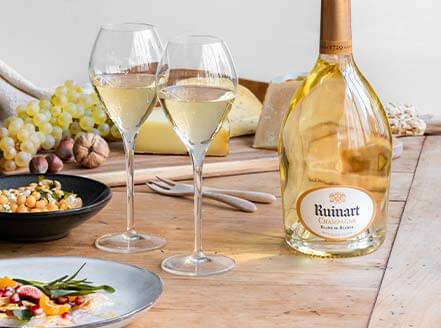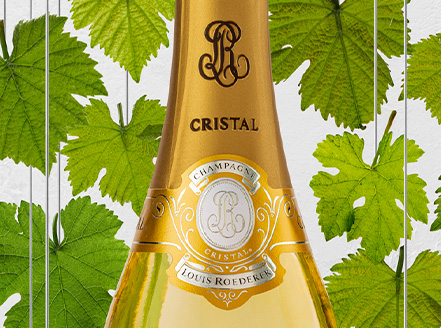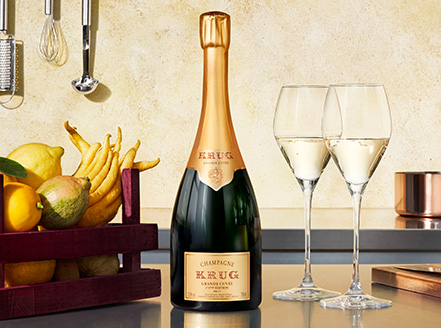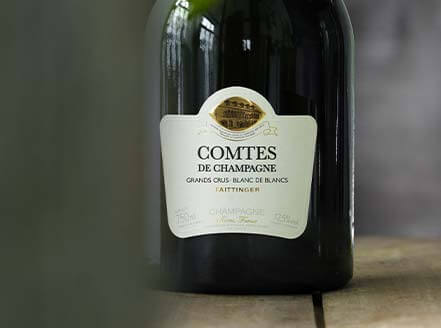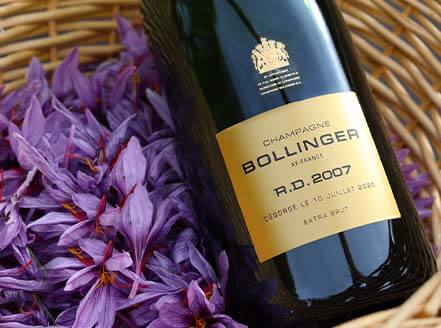Champagne
The wines of Champagne are fine, lively wines. They express themselves best when served chilled but never "shocked". The ideal way to chill Champagne wines is gradually, by immersing the bottle into...Read More











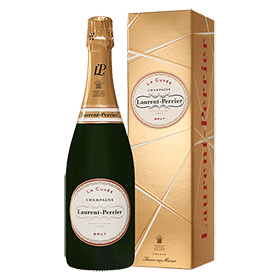














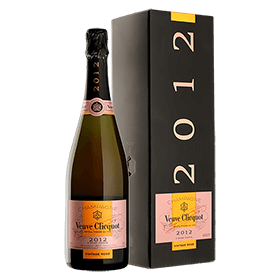

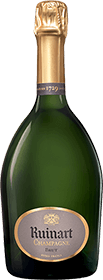



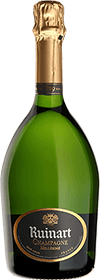
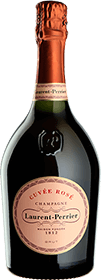




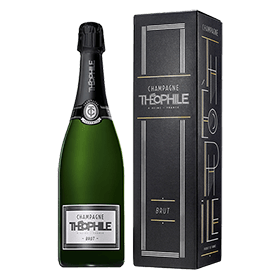
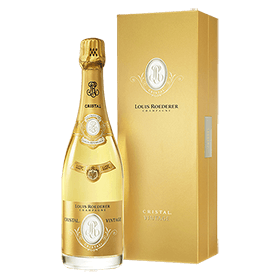





Dom Perignon Champagne
Ruinart Champagne
Louis Roederer Champagne
Krug Champagne
Taittinger Champagne
Bollinger Champagne
Champagne | An Effervescent Indulgence from Northern France
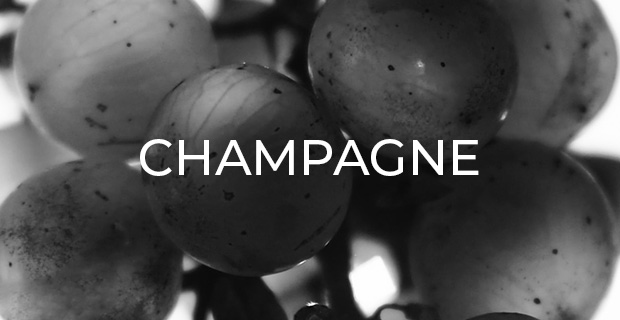
When it comes to celebrating a special moment in life – be it a birthday, wedding day, anniversary or a New Year – no single wine seems to fit the bill quite like a well-chilled bottle of Champagne. Though the production of this effervescent indulgence is limited to a small region in northern France, Champagne exists in a vast variety of hues, flavours and styles, ranging from the elegance and finesse of a Blanc de Blancs to the power and intensity of a vintage Rosé Champagne. Often comprising a blend of several terroirs, grape varieties and vintages, Champagne is the epitome of complexity in the glass, whose suite of nuanced aromas and frothy texture on the palate make it the ideal food pairing with your favourite holiday dishes.
The History of Champagne
The Champagne region is home to a rich history of wine production, one which dates back to the Middle Ages, when Pope Urban II first declared the wines of Champagne to be the perfect in the world. In 987, Hugh Capet was crowned the King of France at the cathedral of Reims in Champagne, beginning a long tradition of coronations and the grand bouquets with which they were celebrated. This association between royal celebrations and Reims did much to enhance the reputation of Champagne wines throughout history, and subtle hints of this association still remain in the marketing message of Champagne today.
Champagne’s proximity to the Seine River allowed for easy delivery of wines to Paris, a fact that further boosted the reputation of the region’s wines in the French capital. Before the existence of a railway, Champagne and Burgundy were the two main suppliers of wines to Paris, which also led to fierce competition between the two regions. During this time, both regions were focused on the production of still red wines, but Burgundy’s climate favoured a richer, more intensely flavoured red, which led producers in Champagne to eventually shift their focus to a kind of greyish-pink wine made of red varieties, especially Pinot Noir. Dom Pérignon, cellar master for the Benedictine Abbey at Hautvillers, was one of the first pioneers of quality in the Champagne region. Between 1668 and 1715, Dom Perignon developed a collection of very precise techniques in order to improve quality and (ironically) to prevent the production of “volatile” wines with bubbles, which were considered a fault back in this day. Dom Pérignon advocated for aggressive pruning to limit yield, harvesting in the morning and taking care not to break the grapes en route to the winery, techniques which were adopted by many producers in the region and continued until today.
The production of sparkling wine in Champagne was actually the result of a happy accident, involving the English. During the colder winters in Champagne, temperatures would drop so low that fermentation would stop prematurely, leaving residual sugar and dormant yeast in the wine. During this time, the wines were shipped to England in bulk, where they would be bottled (with cork stoppers) by wine merchants. When the weather warmed, fermentation would restart, this time inside the bottled wine, and the carbon dioxide produced in the process could no longer escape. When these bottles were opened, they were found to contain bubbles. While the French were determined to get rid of these bubbles, considered by them an unacceptable fault, the English developed a liking for the “sparkling wines”. In fact, having discovered that any wine could be made sparkling simply by adding sugar before bottling, English merchants began the “production” of sparkling wine even before the French caught on to its popularity. Advances in glass manufacturing went hand in hand with the prominence of sparkling wines, as stronger glassware (invented by George Ravenscroft, among others) allowed for these bubbly wines to be transported more safely without the bottle exploding.
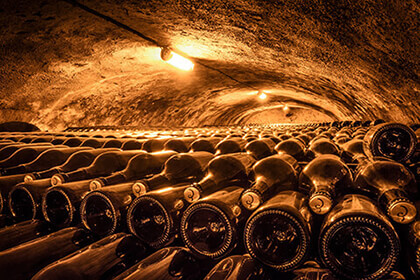
One of the first proponents of sparkling Champagne wines in France was Philippe II, Duke of Orleans, the nephew of Louis XIV, who became Regent of France after his uncle’s death in 1715. The Duke began serving these wines at his royal court, which sparked a trend among the fashionable elite of Paris. Soon, the demand for these bubbly wines led producers in Champagne to begin shifting their focus from still wines to sparkling. The 19th century saw the establishment of the first great Maisons du Champagne by private houses and merchants who would produce wine from grapes purchased from growers in the region. The first great estates included Moet & Chandon, Louis Roederer, Taittinger and Piper-Heidsieck.
During the centuries that followed, a series of technological improvements, especially in bottle and cork design, helped perfect the art of sparkling Champagne production. And it seems that almost all of the great Maisons du Champagne played their part in making Champagne the region and product it is today. For example, it was Ruinart, the first Maison du Champagne exclusively dedicated to sparkling wine, that also produced the first Rosé Champagne, all the way back in the 18th century. It was Madame Clicquot of the Veuve Clicquot Champagne House who first developed the process of riddling in the early 19th century as a way to get rid of sediments in the bottle, without letting out too much gas. In the mid-19th century, Perrier Jouet pioneered the “brut champagne” style, which involved the addition of an only very low amount of sweetness (dosage) at disgorgement in order to produce a champagne with a dryer style. In 1936, the Moet & Chandon House launched the debut vintage (1921) of Dom Pérignon, the first ever “prestige cuvée” of Champagne, or a proprietary wine representing the top of a certain producer’s range. This would pave the path for the creation of today’s most sought-after champagnes: Cristal by Louis Roederer, Grand Siècle by Laurent-Perrier, Sir Winston Churchill by Pol Roger, Cuvée Femme de Champagne by Duval-Leroy…
Champagne | A Viticultural Region and Its Terroir
The Champagne region comprises roughly 34,000 hectares of vineyards, producing an average of one million bottles per day. At latitude 49°N, Champagne is one of the most northerly wine-producing regions in the world, with much cooler average temperatures than any other region in France. In such a climate, the growing season is rarely warm enough to allow the grapes to ripen fully, resulting in a high level of acidity when they are harvested. While too tart for most still wines, second fermentation has made possible a style in which this tartness is appreciated and even sought-after. It remains the hallmark of great champagnes to this day.
The Champagne region, whose commercial centres are the towns of Reims and Epernay, is further divided into 5 major growing areas, each with its own patchwork of terroirs. In central Champagne, the Côte des Blancs is famous for its Chardonnay grapes grown in chalk-based soils and producing very elegant and racy wines. In the northeast, the vineyards of Montagne de Reims are known to produce full-bodied champagnes from Pinot Noir grapes. The Vallée de la Marne area is located west of Epernay, and is known for its fruity and unctuous Pinot Meunier. The Côte des Sezanne is home to a terroir of chalk and marl soils, producing aromatic wines with less acidity than those of the Cote des Blancs. And in the Aube (also known as Côte des Bar), Pinot Noir thrives in marl soils, producing aromatic wines with slightly less acidity. The terroir of Champagne is characterised by a hilly landscape and chalk soils, which are finer grained and more porous than the limestone terroirs found elsewhere in France. The loose structure of this Champenois soil allows the vine roots to more easily absorb the minerals therein, along with providing excellent water drainage (which is especially important considering the rainy climate of the region).
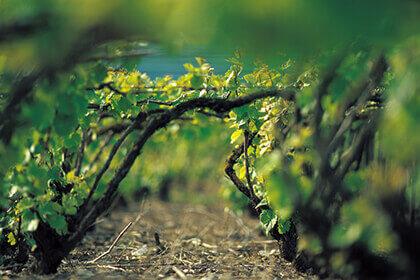
The classification of Champagne vineyards took place in the mid-20th century as a way to establish prices for grapes grown in the various villages of the region. As such, the Champagne classification system is broken down by which village each vineyard is located in. When this original Echelle des Crus system of classification was established, 12 villages were ranked Grand Cru (Ambonnay, Avize, Ay, Beaumont-sur-Vesle, Bouzy, Cramant, Louvois, Mailly Champagne, Puisieulx, Sillery, Tours-sur-Marne, Verzenay and Verzy). That number expanded to 17 in 1985, with the promotion of five more villages (Chouilly, Ogern, Mesnil-sur-Oger, Verzy and Oiry). There exist today a total of 42 Premier Cru plots in Champagne. While Grand Cru vineyards account for only 9% of the total planted vineyard land in Champagne, the prestige cuvées of several Maisons du Champagne (including Dom Pérignon by Moet & Chandon and Cristal from Louis Roederer) are produced exclusively from Grand Cru (and sometimes Premier Cru) plots. Most champagne comprises a blend of base wines from many different plots. However some very rare single-vineyard champagnes do exist, like the legendary Le Clos du Mesnil and Clos d’Ambonnay of Krug.
In 1941, the Comite Interprofessionel du Vin de Champagne (CIVC) was formed and tasked with defending the Champagne appellation, along with its producers against producers outside of the region producing sparkling wine and marketing it under the name Champagne. The committee’s very first priority was to prevent the misuse of the name “Champagne” to describe (and sell) sparkling wines produced outside of the Champagne region. In 1990, fervent lobbying on the part of the CIVC resulted in the passage of a law banning the use of the word “Champagne” to sell any product that might misappropriate or weaken the reputation of the region and its wines.
The Grape Varieties and Colours of Champagne
Over the past few centuries, the list of grape varieties permitted in Champagne has been reduced to seven in total, based on quality of wine produced and natural ability to survive (thrive even) in the cold, wet climate of Northern France. Out of these seven, three represent roughly 99.7% of the regions plantings: Pinot Noir, Pinot Meunier and Chardonnay. These three varieties are often blended in different relative proportions and each one brings a something unique to the finished champagne. Pinot Noir contributes a certain weight on the palate, along with dark fruit aromas. Pinot Meunier contributes good acidity and a fruitiness that shines brightest in younger wines. And Chardonnay gives the wine an elegance and finesse, a certain creamy roundness on the palate, along with fresh stone fruit aromas. The other four varieties allowed in the appellation are Pinot Blanc, Pinot Gris, Petit Leslier and Arbane, though they are used in very small quantities.
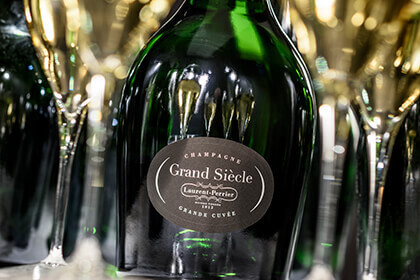
Depending on how it is made, Champagne can take on various different hues. Champagne that appear white in the glass can be made as a Blanc de Blancs (from only white wine grapes, like Chardonnay), Blanc de Noirs (made from red wine grapes like Pinot Noir, but not left to macerate on the skins during fermentation enough to get pigments from the skins), and just Blanc (made from a blend of white and red wine grapes). Champagne can also bear a pink hue when it is a Rosé Champagne, produced either by adding red wine to a white wine blend or by fermenting the juice in contact with the skins of red grapes.
Blending, Dosing and Ageing Champagne
The production process of Champagne isn’t so different from that of other wines, but there are some notable differences. Rather than just blending base wines from various parcels and varieties, as in the case of most still wines, Champagne allows for a blend of various parcels, various varieties and various vintages as well. In fact, most Champagne is sold as “Non-Vintage” or “NV” to designate a blend of different vintages, with some “reserve wines” from previous years blended in with the current vintage. Originally, this process was a way of mediating the effects of a poor vintage in a region with as much climate variation as Champagne. In certain exceptional years, however, many Champagne brands do release Vintage Champagne produced exclusively from grapes harvested in that year. These Vintage Champagnes are usually made to age longer and represent the higher end of the quality spectrum. Famously, the Dom Pérignon cuvee is always a Vintage Champagne and is never produced as a non-vintage wine.
Perhaps the greatest difference in the production process of champagne is the second fermentation that takes in the bottle, following the addition of yeast and sugar. It is this process that leads to the bubbles in Champagne, as the carbon dioxide generated from the processing of the sugar by the yeast becomes trapped in the bottle, until it is uncorked with a loud “Pop” that has become a symbol of celebration. The amount of sugar added to a bottle of champagne is called its “dosage” and determines the level of sweetness of the finished product. Initially, most sparkling Champagne wines were sweet. However, when the English palate began demanding dryer styles, the Champagne Houses responded and began reducing dosage. The Perrier-Jouet Champagne House is credited for creating the very first “Brut” style in 1856. Later on, Laurent-Perrier perfected the Zero Dosage style, with no additional sugar added. Today, Champagne is classified into the following categories based on EU regulations, listed by ascending level of sweetness: Zero Dosage / Brut Nature (less than 3 grams of residual sugar per litre), Extra-Brut (0-6 grams of sugar per litre), Brut (6-12 grams of sugar per litre), Extra-Dry (12-17 grams of sugar per litre), Sec (17-32 grams of sugar per litre), Demi-Sec (32-50 grams of sugar per litre) and Doux (more than 50 grams of sugar per litre).
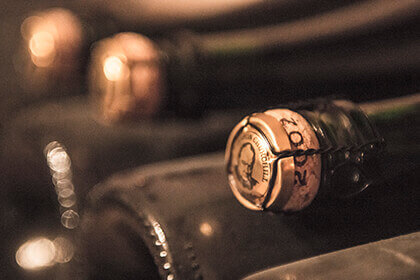
All Champagne must spend a minimum of 12 months ageing in bottle on its lees, which are the spent yeast cells that remain after second fermentation is complete. Some Champagnes are produced by extending the time the wines spend on their lees, resulting in yeasty aromas of freshly baked brioche, for example, on the nose of the finished wine. Non-Vintage Champagne must mature in bottle for at least 15 months in total before it is released, which means 3 more months after the yeast is removed at disgorgement. In total, they must spend 36 months in the bottle before they are released, though most are kept in the estate cellar much longer, only released after 4 to 10 years in the bottle.
Pairing and Enjoying Champagne
There is no denying that Champagne has long been synonymous celebration. Widely consumed at weddings, birthday celebrations, New Year’s Eve parties and as an aperitif before various holiday feasts, Champagne is the wine of choice when toasting to a special occasion. A bottle of champagne, especially in a large format (a 1.5 litre Magnum, 3 litre Jeroboam, 6 litre Mathusalem, etc) is the perfect gift idea for those who love fine wine. Vintage Champagne makes for an especially strong statement when celebrating birthdays or wedding anniversaries.
Champagne shines the brightest when it is chilled to a temperature of 47-50°F. Any colder and it may numb the taste buds; any warmer it may lose its bubbles too quickly. Champagne is popularly served in a flute, a long and thin glass type that best shows off its fine thread of effervescence and allows it to keep its bubbles for as long as possible. However, to fully enjoy a Champagne, it should ideally be served in a tulip glass, whose wider rim will allow the taster to take in the aromas as well.
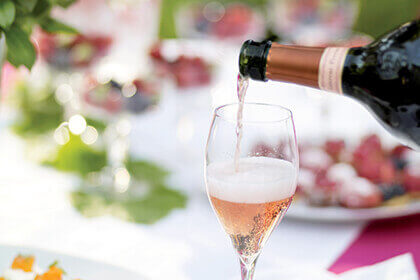
A common misconception about Champagne is that it serves only as an aperitif before meals rather than paired with the meals themselves. In fact, the profound complexity of nuanced aromas and flavours inside a glass of Champagne make it the ideal pairing to a wide range of dishes. In finding the perfect pairing, one must consider the style of the Champagne – the relative proportion of Chardonnay to Pinot Noir to Pinot Meunier, whether it is a vintage or NV, how much time it has spent on lees, its dosage, and the length of time spent ageing in bottle.
The fresh citrus aromas and minerality in most NV Blanc de Blancs Champagnes make it the ideal pairing with fresh seafood or oysters, while a richer vintage Blanc de Blancs could stand up perfectly to a more indulgent lobster dish. A NV Brut could go well with most fried foods or cosy comfort foods, as the acidity in the Champagne will have the effect of cutting the fat and “cleaning the palate.” A Vintage Brut will go beautifully with a classic brunch dish, like seasoned, poached eggs with smoked salmon and toast. When it comes to a richer Rosé Champagne, think something slightly meatier, like barbecued salmon or boldly seasoned roast chicken. Vintage Rosé Champagne will go beautifully with roasted game or poultry, like pheasant or duck. And when it comes to cheeses, elegant and fine Blanc de Blancs will shine with creamy camembert, while more powerful vintage Pinot Noir Blanc de Noir or Rosé Champagne (especially aged on its lees longer) will provide the perfect pairing to aged Comté or other strongly flavoured cheeses. As for the sweeter side of the spectrum, a Demi-Sec Champagne will go nicely with chocolate soufflé, while Doux Champagnes will pair fantastically with lemon merengue pie, whose flash of acidity will balance the sweetness of the Champagne.
Other Sparkling Wines: Alternatives to Champagne
While Champagne is considered by many the original sparkling wine, its reputation closely associated with the celebration of special occasions, there are also many other sparkling wines to choose from. The great Champagne Houses are credited for having invented and gradually perfected one method for producing sparkling wine, named the “méthode champenoise” (Champagne method), or “méthode traditionelle” (traditional method), during the 19th century. Since then, many other wine regions around the world has adopted this method to produce their own sparkling wines either with the same grape varieties (Pinot Noir, Pinot Meunier and Chardonnay) or their own indigenous varieties.
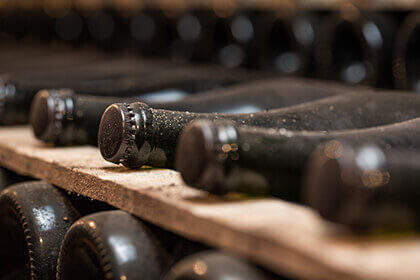
In the 1860’s, for example, a winemaker by the name of Joseph Raventos, from the Penedès region of Catalonia, Spain travelled to France and learned about the Champagne method. Once he returned home, he decided to recreate it, but with three white grapes native to Catalonia: Macabeo, Xarel·lo and Parellada. He released his first bottle of this “Spanish take on Champagne” in 1872 and formed an organisation of local winemakers with the aim to further develop this new product. They named it Cava. Today, Cava is one of the world’s most popular wines produced by the Champagne method and one of the most successful wines from Spain. The Xarel·lo variety contributes slightly earthy aromas to the blend, setting it apart from other sparkling wines. The Champagne method was also adopted in the 1950’s by Italian producers in the Lombardy region and used to produce a high-quality sparkling wine by the name of Franciacorta. The grape varieties used in Franciacorta are Chardonnay, Pinot Nero and Pinot Bianco. In the late 1960’s, the method spread to South Africa, where it was used to produce Méthode Cap Classique wines with Chardonnay and Pinot Noir, as well as Sauvignon Blanc and Chenin Blanc. In the United States, the same method was first used in 1892 by the Korbal brothers to produce high-quality sparkling wines in the Russian River Valley of California’s Sonoma County. While these first bottles of American sparkling wine were produced using Riesling, Chasselas, Traminer and Muscatel, these were gradually replaced with the more popular Chardonnay, Pinot Meunier, Pinot Noir and Pinot Blanc varieties. Historically, American producers have enjoyed the right to label their sparkling wines as “Champagne.” But this changed with the 2006 wine-trade agreement between the United States and the European Union. The agreement included a clause which prohibited the use of the word “Champagne” on wine labels of American sparkling wine, except on labels which had been previously approved.
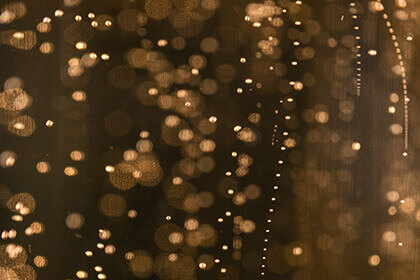
In the past few decades, many of the best-known and most prestigious Champagne Houses have invested in California as a New World terroir in which to produce their sparkling wines. This trend has resulted in several French-owned sparkling wine estates, such as the Roederer Estate by Louis Roederer, Domaine Chandon by Moet et Chandon, and Domaine Carneros by Taittinger. The Champagne method is also used to produce sparkling wines in many other areas of France, not just in Champagne. These wines are referred to as “Crémant” (for example: “Crémant de Bourgogne,” “Crémant de Loire” or “Crémant du Jura”) and are usually less expensive than most champagnes from the great Champagne houses. The Loire region of France (and Saumur, in particular) is widely recognised for the production of Crémant, usually from a blend of Chardonnay, Chenin Blanc and Cabernet Franc. However, varieties like Sauvignon Blanc, Pinot Noir, Cabernet Sauvignon and Gamay are allowed as well. French Crémant wines, while produced by the Champagne method, can come in a wide variety of styles. Other French sparkling wines not labelled “Crémant” include those of Vouvray, which is made of 100% Chenin Blanc.
